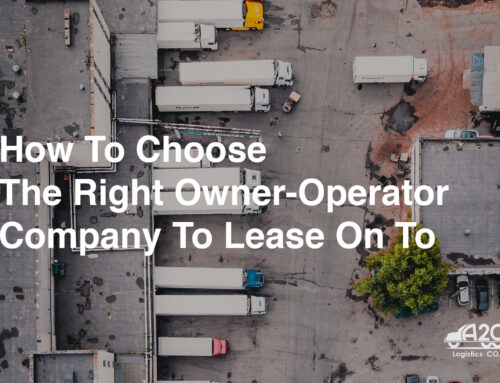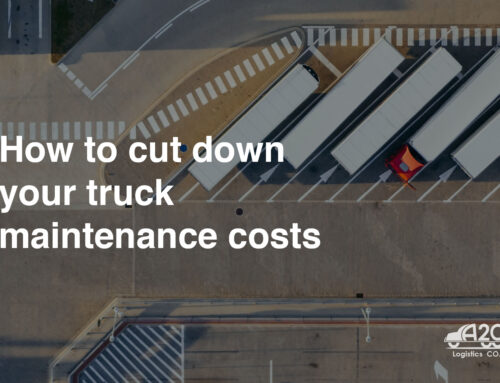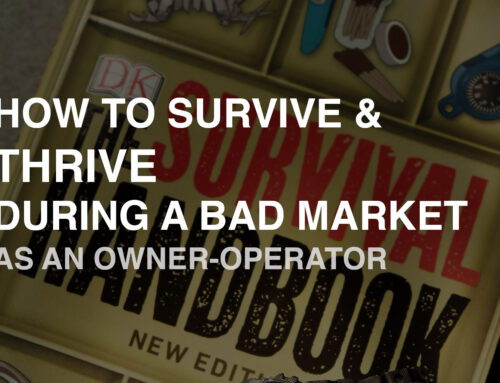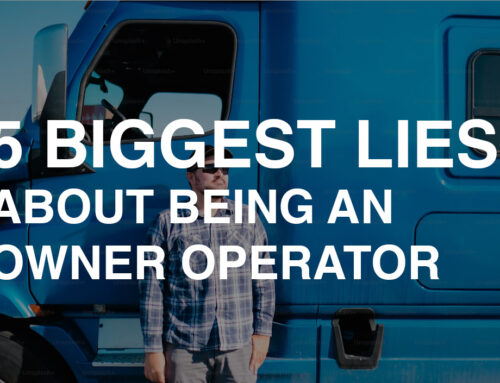Setting up your own trucking company is a step forward within the industry, and there are many crucial elements to consider in your quest to become a motor carrier. According to a survey conducted by Statista, 87% of freight shippers considered reliability one of the most important factors when choosing a motor carrier in the United States. In order to become a reliable motor carrier and develop prosperity, you should build a business roadmap considering the following aspects:
Get started with your FMCSA registration
First and foremost, you’ll need to accomplish the most important step in your motor carrier journey: getting started with your FMCSA registration process. There are four big steps that you need to follow:
1. Determine the FMCSA requirements that are suitable for your type of business:
– Operating Authority (MC Number): you will need to register under an MC number if your planned business operations include transporting federally-regulated commodities owned by others or arranging for their transport
– USDOT Number: this is required to those motor carriers who operate commercial vehicles transporting passengers or hauling cargo in interstate commerce, but it is also applicable for commercial intrastate hazardous materials carriers who haul types and quantities requiring a safety permit. In the first 12 months of functioning as a motor carrier you will be audited by DOT, the main purpose is to make sure you’re compliant with all the regulations.
2. Complete FMCSA application process:
If you managed to get your MC number or USDOT you can apply directly on L&I public site. If you don’t have your numbers yet, you can apply via URS.
3. Be aware of the insurance filing requirements
All motor carrier applicants must have certain insurance and legal process agent documents on file before the FMCSA can grant their authorities.
The necessary paperwork you’ll need depending on the business you are looking to operate can be found here.
4. Maintain and update your operating authority information
When a motor carrier changes its name, address, or other information in its record, they must promptly update their US DOT and operating authority records with FMCSA. Furthermore, FMCSA requires that all organizations subject to their authority update their records every two years.
Hit the road using the right equipment
Semi-trucks and city vehicles (straight trucks) are the two types of motor carrier vehicles. Semi-trucks vehicles are larger and used to transport goods over long distances. City vehicles are much smaller in size and are used for pick-up and delivery. Semi-trucks vehicles can be used for pickup and delivery on occasion, as can city vehicles, but doing so is inefficient and can be costly.
Semi-trucks: These vehicles are typically tractor-trailer combinations with five or more axles. The cargo capacity of these vehicles is determined by their length and the state’s maximum weight limits. Most states allow a tractor-trailer combination with more than five axles, but it should be considered that the maximum haul shouldn’t exceed 80,000 lbs. gross weight. The most common trailers that can be combined with a semi-truck are the following: dry van, flatbed, tanker, and reefer.
Straight trucks: Most of the time, these vehicles are single units and smaller than line-haul vehicles. The cargo and the engine are both in one place on the city truck. Most city trucks are between 20 and 40 feet long, and their cargo units are between 15 and 20 feet long.
Decide if you’re going to be an LLC or a corporation
When it comes to your business structure, you’ll have to shape the identity you want to create. As the subtitle says, there are two main options you might want to take into consideration.
LLC: Limited Liability Company, is one of the choices that motor carriers tend to register for due to the fact that it separates your business assets from your personal property, yet it is far simpler to administer than a corporation, particularly for small companies. To register as an LLC, you must first get your company’s articles of organization, which is a document that outlines when you founded your business, who the members are, what it will operate, and other similar aspects related to the matter.
Corporation. This type of structure is better for bigger businesses. If you’re getting close to having more than 20 trucks in your fleet, you should consider becoming a corporation, as it makes it much easier to invest back into your business. The structure of a corporation poses a few differences from an LLC. When you are designing your business as a corporation, you should know that a corporation is required to issue stock to the owners, which can be transferred. In comparison, LLCs are owned by members, and stocks don’t have to be passed around. Having a board of directors, designating officers and executives, and having annual shareholder meetings is another corporate requirement that an LLC is not obligated to execute.
Set aside a budget for the start-up expenses
Starting your own trucking business requires a large upfront investment. Having so many resources at once is not something realistic, so the most pragmatic decision would be to save up in advance. If you don’t know the exact amount you should set aside, take into consideration that you will have to pay for the following:
– Tractor down payment
– Trailer down payment
– IRP registration fee
– UCR registration fee
– Down payment insurance
– Worker’s Compensation or Occupational Accident Policy
– ELD
– 2290 heavy highway vehicle tax form
– Prepass
– Professional services
Determine if freight factoring is an option for your business
Factoring is the procedure through which an LLC or corporation that delivers a cargo sells its invoice to a factoring firm. Within 24 hours of receiving the invoice, the factoring business pays the motor carrier the entire amount of the invoice, minus a small percentage. This is often a better option than waiting a month or more for a broker to pay the invoice. The time it takes to get the money will fluctuate depending on a number of variables, but the payment deadlines will vary from one factoring provider to another.
The disadvantages of freight factoring might include higher factoring rates than those offered by a traditional line of credit. A conventional lender, on the other hand, will not provide the extra services provided by freight factoring. Many freight factoring businesses will require that you repurchase invoices that have gone past their due date. In this case, it is better if you could partner with freight factors who offer no-recourse funding that can protect you if a customer fails to pay.
Remember that if it is your responsibility to keep track of the records
Accurate record keeping is one of the main requirements set by the Department of Transportation for motor carriers. In order to comply with the fundamentals requested by DOT, you should keep in mind that any information related to your business should be well-organized.
ELD: When connected to the vehicle’s engine, it automatically records information to make tracking, managing, and sharing records easier and faster, and it helps drivers track their limits. According to FMCSA, the implementation of ELD is mandatory for all motor carriers and drivers from 2019. The data that is automatically recorded through an ELD is the following:
> Date, time, and location
> Number of engine hours
> Number of miles the vehicle has traveled
> The driver’s identification
> Vehicle information
> Motor carrier details
In addition to the information collected and recorded by the ELD in each fleet vehicle, the motor carrier is responsible for maintaining dispatch and trip records. These are considered supporting documents and must be kept by the carrier for a minimum of six months. The information in these records must match the information in the ELD data.
Bills of Lading and Manifests
All freight transported by a carrier must be accompanied by a bill of lading (BOL), which serves as a receipt for the freight services as well as provides information about the contents of the shipment. It is a legally binding contract that gives the driver and carrier the information they need to process the shipment and properly invoice the shipper. A manifest is also required, which acts as a type of tally-sheet, providing a detailed summary of all bills of lading that are included in a specific trip. The following details are required:
> The full names and addresses of the shipper and receiver
> Date of pickup
> Description and packaging details of items being shipped
> NMFC freight class
> Purchase orders or special reference numbers
> Special instructions
> Driver expense receipts
Carriers must keep records of all costs incurred by drivers while on duty but also when they are not driving. The driver is required to collect all receipts and deliver them to the carrier, who must keep them for at least 6 months. This rule generally covers the following types of expenses:
Lodging
> Meals
> Fuel
> Any other related expenses
> Payroll records and settlement sheets
A motor carrier must keep accurate records of all payments made to drivers as an employer. Regular payroll payments, settlement sheets, and any other related documentation are included. This documentation not only proves that the company has made the necessary payments, but it also provides information that drivers and the company will need when tax season comes.
Drive qualification records
These records indicate that the driver is healthy, safe, and qualified to drive a commercial vehicle. It applies to both employees and business owners who are both employers and employees.
Documents that must be kept include:
> DOT compliant employment application;
> medical certificate;
> commercial driver’s license;
> safety performance evaluation;
> motor vehicle driving record and any violations incurred;
> annual motor vehicle Driving record review.
Vehicle Maintenance
Motor carriers are required to keep vehicle maintenance records for any vehicle under their direct control for at least 30 days. This ensures that the maintenance and repair schedule is followed correctly, as well as providing authorities with critical information in the event of an accident or other incident. Records must be kept for one year in the location where the vehicle is garaged and for six months after it has left the carrier’s control. These records must contain the following information:
> Identifying vehicle information
> Inspection schedule
> Repair and maintenance information
> Drug and alcohol testing program
As a motor carrier, you have a responsibility to implement and conduct drug and alcohol testing programs for your drivers and, at the same time, keep records of these results. According to DOT rule 49 CFR, a motor carrier should keep the following records:
A. Records of alcohol test results indicating an alcohol concentration of 0.02 or greater
B. Records of verified positive drug test results
C. Documentation of refusals to take required alcohol and/or drug tests
D. Information obtained from previous employers concerning drug and alcohol test results
E. Records of negative and canceled drug test results and alcohol test results with a concentration of less than 0.02
Also, motor carriers should be aware of complying with the Drug and Alcohol Clearinghouse, which is an online database that provides real-time access to information about CDL driver drug and alcohol program violations to employers and government agencies. Motor carriers and the medical centers where the testing takes place are required by law to report any driver who tests positive.
The advantages and disadvantages of being a motor carrier
As with any other profession, there are advantages and disadvantages. When it comes to becoming a motor carrier, it is already common knowledge that the freedom you obtain once entering the industry is beyond comparison. At the same time, the amount of responsibility you have to carry on your shoulders is far from an effortless life.
Operating your own company is, most of the time, a profitable move, but it is also time-consuming and comes with an endless list of to-dos because you’ll constantly want to improve your business. This comes at the cost of testing different processes and implementing only the ones that work. Sometimes this can bring up frustration and stress, and if you can’t overcome these feelings easily, maybe you should think twice before hitting the road toward motor carrier life.



